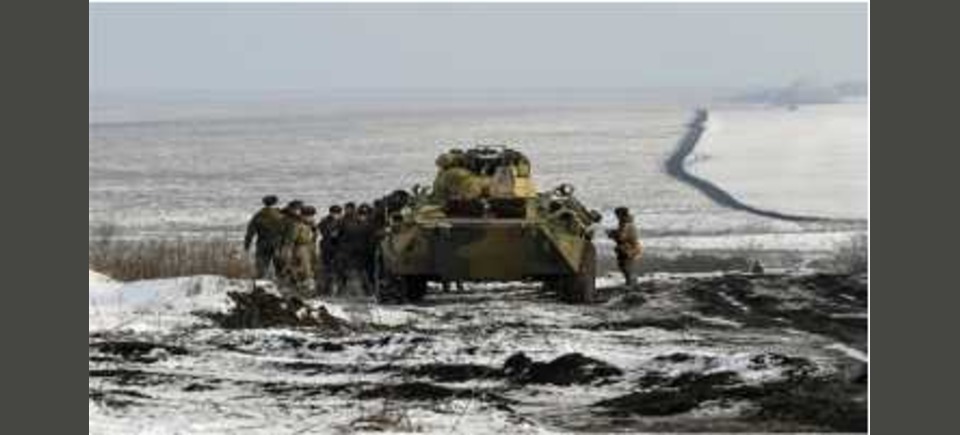By Mukesh Aghi
Russia’s build up on the border with Ukraine, has had the administration in Washington worried. The chatter became louder last week when India abstained from the UN Security Council to discuss the escalating tensions on the Russia-Ukraine border.
Russia and China (permanent veto members) voted against the meeting. At the same time, India abstained along with the African nations of Gabon and Kenya. The other council members (Norway, France, the US, the UK, Ireland, Brazil, and Mexico) voted for the meeting.
As President and CEO of the US-India Strategic Partnership Forum (USISPF), an independent not-for-profit headquartered in Washington DC, with the mission to strengthen the partnership between the two democracies, I find the need to put some thoughts on the table.
At the outset, I would like to record that we at USISPF welcomed Ned Price’s comments, the State Department spokesperson when he articulated that “relationship with India that stands on its own merits” and won’t be impacted due to the tension with Russia over the Ukraine crisis.
The Biden administration understands that India’s position on Ukraine in the United Nations Security Council is a matter of India’s own foreign policy priorities. Hence, Price added, “I will leave it to our Indian partners to discuss their stance in the UN Security on this particular issue.
Why would India Abstain?
India’s Abstention is more significant than not wanting to get involved in a conflict many miles away. It will likely be seen as synonymous with India’s diplomatic posture on the world stage, primarily driven by a sense of strategic autonomy emanating from its non-aligned posture during the Cold War era. New Delhi’s strategic autonomy is a sense of its independent long-term foreign policy based on a multipolar world. Even though ties between Washington and New Delhi have grown on defense, trade, and diaspora relations, India still maintains a legacy era special friendship with Moscow.
Even since the dissolution of the Soviet Union, India’s trade with Russia, especially in defense, has only decreased and now stands at nearly 50 percent and as high as 56 per cent of India’s total arms imports between 2015 and 2019. But still, Russia continues to be India’s foremost defense supplier, followed by France, Israel, and the United States.
Moscow is pivotal to India’s supply of the S-400s missile defense system, which India needs to counter an expansionist China, with aspirations to spread its sphere of influence in Asia and with whom India shares a near-3500 km of undefined border, some of it known as the Line of Actual Control (LAC). It is important to note that Washington DC never offered New Delhi the Patriot missiles, which are closest to the S-400 missile system. Furthermore, unlike Turkey, whose name comes up every time we talk about S-400, India isn’t a NATO signatory and doesn’t have the same obligations as Ankara.
Though India isn’t in any formal alliance with either the U.S. or Russia, it has been clear about maintaining its strategic engagement with Moscow and Washington. We saw this in the recently concluded first 2+2 Foreign and Defense Ministers meeting between New Delhi and Moscow, a trend of successful summits India has successfully followed with the US.
It is vital that the larger framework of the US-India strategic partnership is not viewed when either partner exercises its strategic autonomy to choose the path best for its interest. The sacrosanctity in the US-India partnership allows each partner to exercise their strategic independence and for the other to respect that independent foreign policy, as manifested in Afghanistan, with the US withdrawal from its longest conflict.
Both the United States and India have shared strategic interests in Indo-Pacific and are concerned about Beijing’s sphere of influence. President Bush signed the Civil-Nuclear deal recognizing India’s importance as a strategic partner. President Obama pivoted to Asia, President Trump’s administration used the term Indo-Pacific to describe the region, and President Biden put the Quad into motion.
Since President Biden took office, we have seen concrete steps to operationalize the Quad through collaboration in shared priorities in vaccine diplomacy, resilient supply chains, critical and emerging technologies, STEM-based education, and climate action. The initial success of this framework has also paved the way for the “Middle East Quad” between US, India, UAE, and Israel. The introduction of an AUKUS trilateral accentuates a direct security component in the region, though India is not a part of it.
Next week, the Quad Foreign Ministers meeting takes place between February 9-12 in Melbourne, Australia. While neither Russia nor Ukraine is part of the Indo-Pacific, their presence will be felt in the room and will distract the United States.
Hence the strategic imperative of staying focused is critical. The focus on the Indo-Pacific must not wane. The clarion call is simple, the theatre of convergence of shared interests with the fastest-growing markets remaining in the Indo-Pacific and the importance of the US-India partnership in maintaining prosperity and stability in the region.


